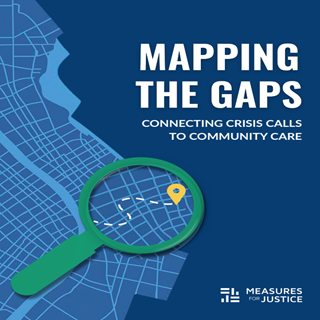By Roger Bootle, David Spencer, Ben Sweetman and James Vitali
Securing the safety of the public is the foremost duty of government. But we are witnessing acute growth in a range of highly visible crimes. This is undermining the very legitimacy of the British state. • Police recorded shoplifting is up 51% relative to 2015 and is at its highest level in 20 years. Police recorded robberies and knife crime offences are up 64% and 89% respectively over the same period. Public order offences are up 192%. The cost of fraud in the benefits system has increased almost eightfold since 2006. • These areas of acute growth in criminal incidents are obscured by the aggregate downward trend in crime since 1995 reported by the Crime Survey of England and Wales. Although this is a reputable source, it excludes many types of serious crime. • Alongside rising crime rates, the criminal justice system is failing. Prisons have reached capacity, and thousands are being released early as a result. As of September 2024, there were 73,105 outstanding crown court cases, 31,000 of which have been outstanding for over 6 months, both numbers being the highest ever. The ratio of police personnel to the population is down 12% from 2010. • The proliferation of crime is an evil in and of itself. But it also significantly diminishes the prosperity of the British people. Crime has direct costs - the damage to, or loss of, property, the cost of insurance, medical bills, the cost of funding the criminal justice system etc. • But some of the greatest costs imposed by crime are indirect and hard-to-measure. They relate to the behavioural changes undertaken by individuals and businesses in response to the expectation of crime. • Order and the rule of law are necessary prerequisites for prosperity. They generate confidence that contracts will be upheld, property will not be stolen or damaged, and that individuals and businesses will enjoy the proceeds of their labour and industry, rather than being deprived of it by criminals. And the converse is true too; when the rule of law is breached with impunity, economic activity suffers. • In the context of increased crime, both businesses and individuals try to protect themselves by undertaking various preventative measures and taking out insurance. But this also drives up their costs and thereby diminishes the living standards of law-abiding people. • Crime thus harms the profitability of businesses and they will tend to pass on the increase in their costs to their customers. • Moreover, the prevalence of crime and the apparent toleration of it corrode the bonds that hold a society together, damaging the trust in other people and institutions which is essential to the functioning of free markets. In undermining a sense of security, it also increases societal risk aversion. • We believe the tangible costs of crime in the UK to amount to almost £170 bn per annum, or about 6.5% of GDP. Of these costs, about £38bn are inflicted on businesses, £31bn on the public sector, and about £63bn against individuals. • But this is an incomplete estimate of the total costs, because it fails to account for the intangible effects on behaviour that derive from the fear of crime. Although these effects are extremely difficult to estimate, they are probably very large. Incorporating them would probably push the total costs of crime to over £250bn, or 10% of GDP. • Fortunately, the cost of crime to society is a problem with a clear solution. We must ditch the permissive paradigm that dominates our present approach to crime, and shift the balance in policymaking back towards the interests of the law-abiding majority. We lay out here a series of measures that could substantially reduce the prevalence of crime and hence its cost to society. • Our policy proposals are based around five key themes: delivering a dramatic expansion of the prison estate; taking back the streets; promoting smarter policing; and reforming sentencing and our courts system – and providing more funding while demanding more accountability. • Much of this programme can be delivered without any increase in funding. It will yield a return for little or no cost. The organisation of policing needs to be radically restructured to focus on the deterrence of crime and the catching of criminals. There needs to be a clear-out of senior members of the prison service and the Ministry of Justice. • Over and above this, however, there is a need for more funding. More resources need to be ploughed into the police and justice system to permit the recruitment of more police officers and staff, build more prisons and improve the functioning of the courts. • It may seem paradoxical that a programme to reduce the incidence of crime and its costs to society should include spending more public money. But this extra money can bring a significant return to society and a stronger economy. It should be regarded as a form of public investment. • Nevertheless, in these straitened times there is no scope to increase overall government spending financed by borrowing, and the burden of taxation is surely at the limits of what the economy can bear. • Meanwhile, given the global threats faced by the United Kingdom, the defence of the realm requires more funding. This must come at the top of the list of priorities. • So any increase in funding to finance our proposals must come from reductions in other sorts of public spending. While this paper does not seek to lay out in detail what other sorts of spending ought to be cut, with government spending as a share of GDP at a post-war high, there is ample scope for savings. Civil service manning levels, the benefits bill, overseas aid and the regime for uprating pensions will all have to be reviewed. • There are two reasons why our proposals should rank highly in the list of spending priorities alongside the need to spend more money on defence. First, by reducing the cost of crime and bringing about a stronger economy, our proposals will eventually enable the provision of more resources for other spending – including defence. • Second, the external threat to the United Kingdom is no longer purely from conventional warfare. It is hybrid and includes the sponsorship of terrorism, cyber warfare, attacks on critical infrastructure, and campaigns to widen divisions in our society – all activities which undermine the public’s confidence in the nation’s security at home. Maintaining a strong criminal justice system is fundamental to British interests and countering the threats to the nation which originate both at home and abroad. • If we are to take a less permissive approach to policing, we need to put more people behind bars. And to do this, we recommend the construction of 43,000 additional prison places and the phasing out of prison over-crowding by building a further 10,000 prison cells. • Police forces need to take control of the streets and give them back to the law-abiding majority, returning to a version of neighbourhood policing which has community orderliness and security at its heart. • Policing needs to be smarter, both tactically and strategically, making better use of technology. And it needs to neutralise the threat posed by hyper prolific offenders – the 9% of criminals who commit over half of all crime. • There also needs to be a major increase in prison sentences for the most serious crimes. The simple fact is that in our society, the chances of being caught are very low and if and when a criminal is caught and convicted the punishment is often laughably lenient. • This means that for those individuals inclined this way, crime pays. The system needs to be radically redesigned so that it doesn’t.
London: Policiy Exchange, 2025. 91p.
















